|
A Research Scientist at Google DeepMind working on Information Quality. I recieved my PhD in Computer Science from Boston University where I was advised by Prof. Kate Saenko and worked on unsupervised visual cross-domain alignment for image manipulation. Before joining BU, I graduated from the Moscow Institute of Physics and Technology, with a BS in applied math and physics, and MS in applied math and computer science (joint with Skoltech). usmn[at]{bu.edu,google.com} / CV / Extended CV / Google Scholar |

|
|
During my PhD, I worked on generative image modeling for unsupervised cross-domain image alignment and manipulation. I am also interested in ML for graphics, generalization and statistical learning theory, neural tangent kernels and overparameterization, and other adjacent topics. See the resources section below. |
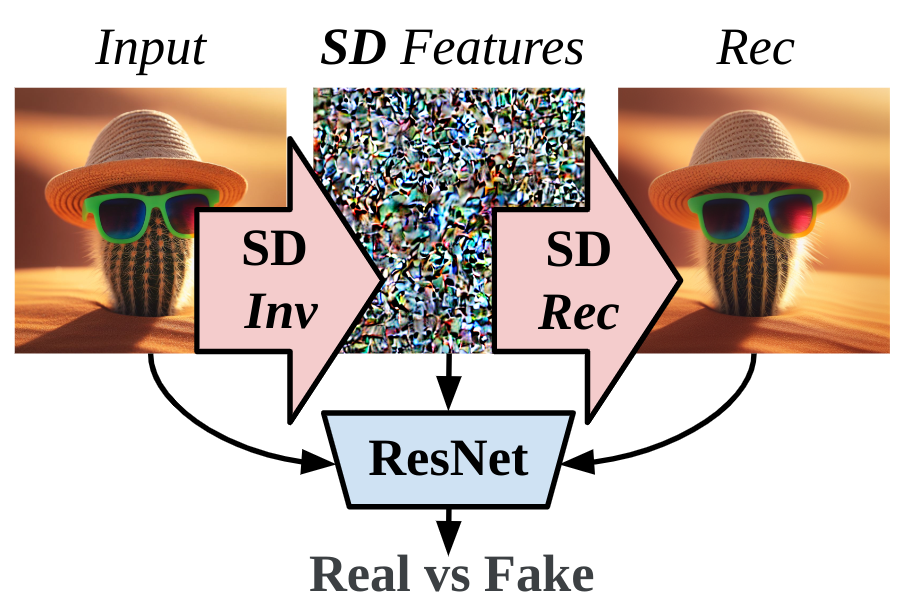
|
George Cazenavette, Avneesh Sud, Thomas Leung, Ben Usman CVPR 2024 proceedings / project page / bib We show that inversion maps extracted from Stable Diffusion help GenAI detectors in generalizing to other unseen text-to-image generators. We also propose a new GenAI detection benchmark that removes stylistic and content biases between real and fake images via reverse image search. |
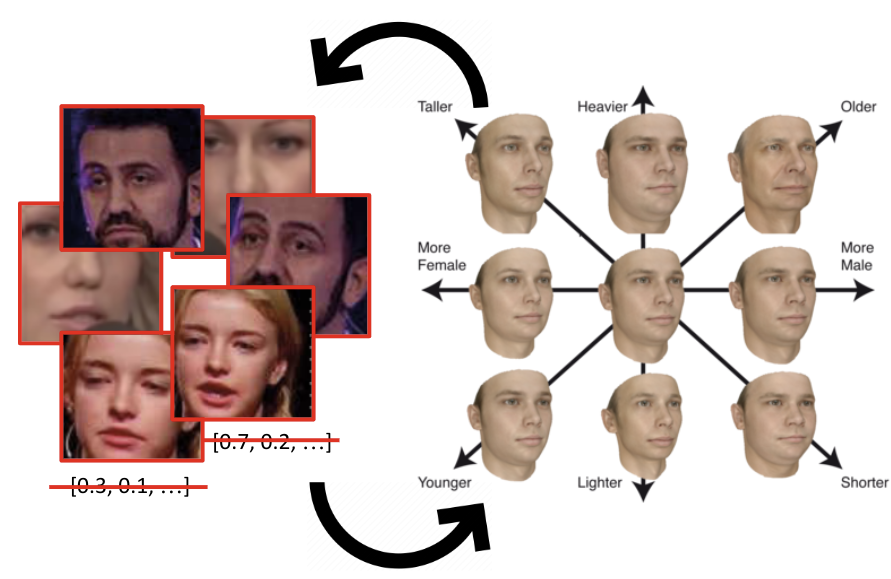
|
Ben Usman PhD Thesis 2022 youtube [1h] / slides / bib We show how flexible attribute manipulation models can be trained without massive labeled datasets of real images by transferring knowledge about the desired manipulation across different image domains that share the underlying structure. |
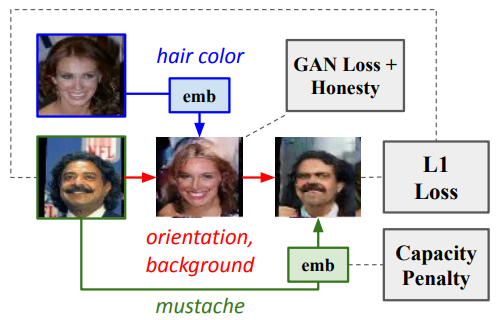
|
Ben Usman*, Dina Bashkirova*, Kate Saenko WACV 2023 proceedings / suppl / github / project page / video / poster / bib We propose a new many-to-many image translation method that infers which attributes are domain-specific from data by constraining information flow through the network using translation honesty losses and a penalty on the capacity of the domain-specific embedding, and does not rely on hard-coded inductive architectural biases. |
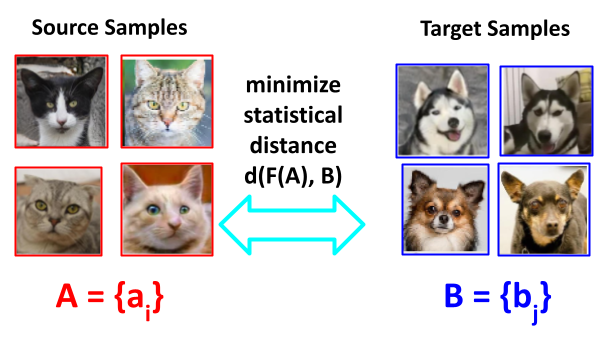
|
Literature Review 2021 youtube [1h] / slides / refs / bib I present prior work that introduces tools helpful in reasoning about UI2I methods: ε-cover method with Chernoff bound (to estimate sample complexity), approximate Nash equilibrium (to analyse the existence of the solution), invertibility of Markov operators (to estimate statistical distances under data augmentations), and complexity tradeoffs in unsupervised alignment. |
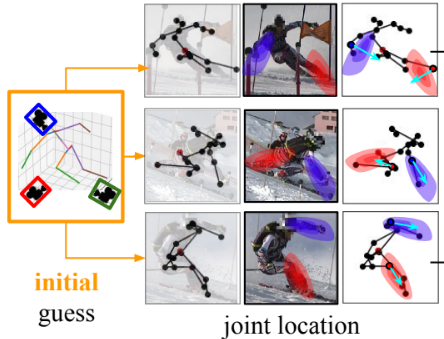
|
Ben Usman, Andrea Tagliasacchi, Kate Saenko, Avneesh Sud CVPR 2022 arxiv / github / project page / demo / poster / bib We showed that a small feed-forward network can quickly and accurately estimate 3D poses and camera parameters from multi-view imagery successfully resolving uncertainty of single-view pose predictions and providing additional regularization in poorly conditioned few-camera setup. |
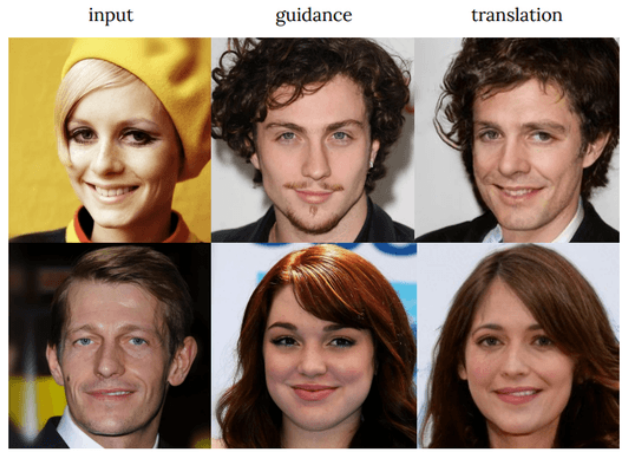
|
Dina Bashkirova, Ben Usman, Kate Saenko WACV 2022 arxiv / github / project page / poster / proceedings / bib Our evaluation protocol reveals that all existing unsupervised many-to-many translation models fail to infer which attributes are domain-specific and which are domain-invariant from data, and mostly rely on biases hard-coded into their architectures. |
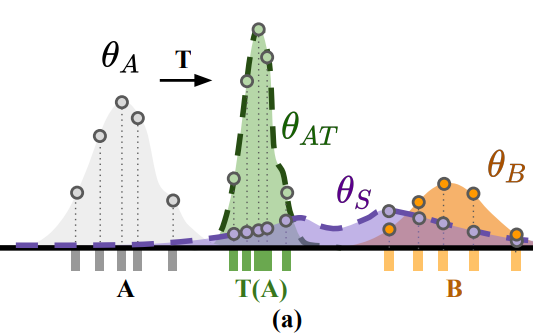
|
Ben Usman, Nick Dufour, Avneesh Sud, Kate Saenko NeurIPS 2020 arxiv / github / video [3min] / slides / poster / proceedings / bib We show how to upper-bound an adversarial log-likelihood ratio domain alignment objective with a simple stable minimization objective, if the domain transformation is a normalizing flow, and show its relation to Jensen–Shannon divergence and GANs. |
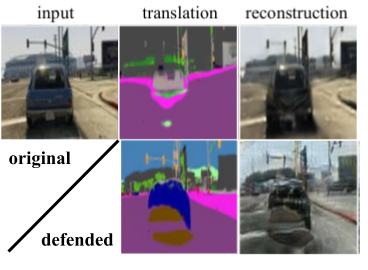
|
Dina Bashkirova, Ben Usman, Kate Saenko NeurIPS 2019 arxiv / github / project page / poster / proceedings / bib We show that cycle-consistent models reconstruct input images by embedding low-amplitude structured noise into intermediate generated images. We propose an adversarial loss that prevents this kind of "cheating" and, as a result, improves translation accuracy. |
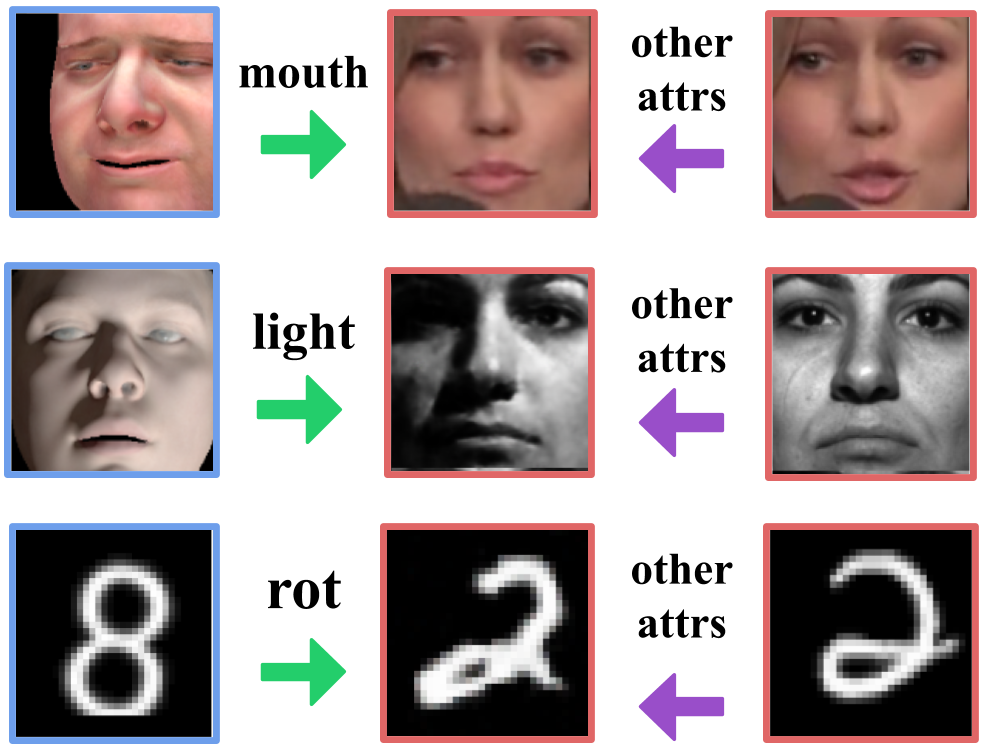
|
Ben Usman, Nick Dufour, Kate Saenko, Christoph Bregler ICCV 2019 (Oral Presentation) arxiv / project page / demo [1min] / iccv oral [4min] / poster / slides / bib We train a model to precisely manipulate individual attributes of real images using only synthetic supervision for training, e.g. learning to realistically manipulate mouth expression or lighting on real human images from demonstrations of how these manipulations look on 3D renders. |
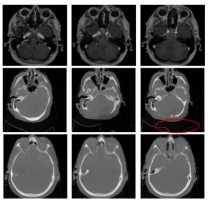
|
Dina Bashkirova, Ben Usman, Kate Saenko arXiv 2018 arxiv / github / volumetric data / bib We propose a spatiotemporal extention of CycleGAN and show when it performs better then per-frame translation on two novel unsupervised video-to-video translation benchmarks including a novel CT-to-MRI volumetric medical domain. |
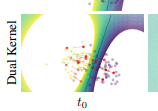
|
Ben Usman, Kate Saenko, Brian Kulis ICLR Workshop 2018 arxiv / poster / slides / bib We showed how to stabilize gradient descent iterations for the adversarial alignment with a kernelized logistic discriminator by dualizing the inner maximization problem, and point to its relation to MMD with iteratively-reweighted least squares. |
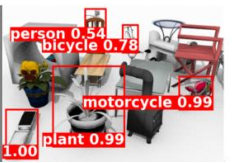
|
Xingchao Peng, Ben Usman, Kuniaki Saito, Neela Kaushik, Judy Hoffman, Kate Saenko arXiv 2018 arxiv / project page / challenge website / bib We developed a large-scale synthetic datasets with occlusions for cross-domain detection and open-set classification. |
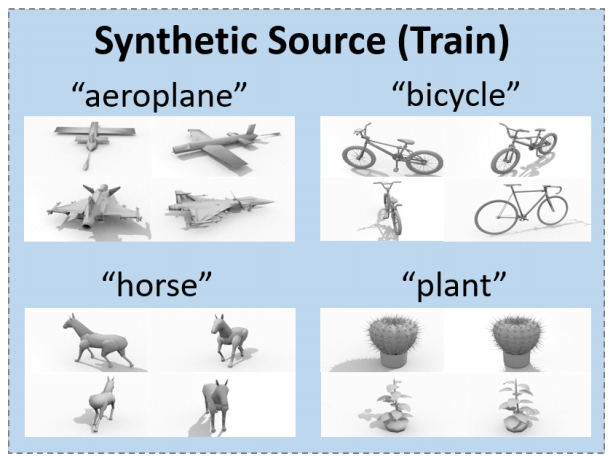
|
Xingchao Peng, Ben Usman, Neela Kaushik, Judy Hoffman, Dequan Wang, Kate Saenko CVPR Workshop 2018 arxiv / challenge website / bib We developed a large-scale synthetic datasets for cross-domain closed-set classification. |
|
Teaching Fellow (TF) for CS542 Machine Learning [2019], Teaching Assistant (TA) for CS591: Deep Learning [2017], Grader for CS542 Machine Learning [2017] [2018], Final Project Supervisor and Guest Lecturer [pdf] for CS591 Machine Learning [2020] and CS585 Image and Video Computing [2021]. Reviewer for NeurIPS17, CVPR17, ICRA17, CVPR19, NeurIPS20, NeurIPS21, emergency reviewer for CVPR18, outstanding reviewer for CVPR20 and NeurIPS22. Helped running VisDA challenges at ICCV17, ECCV18, ICCV19 workshops, and NeurIPS21. Supervised a high-school student for the AI4ALL outreach research program during the summer of 2021, and a master student for their directed study during the summer of 2020. |
|
Outside machine learning, I like learning about new ways of looking at math problems (mostly in statistics, linear algebra, geometry, optimization), paradigm-shifting features in programming languages (like Rust's ownership), creative meta-programming (like narrowing type annotations in python with z3), probabilistic programming languages, shaders, better mental and programming models for hard problem domains like parallel computing or async user interaction (e.g. under what restrictions it is possible to declaratively describe a distributed computation and a consistency model - such as a kv-store, or a distributed consensus, or an async ui with client-side prediction - and have a compiler that infers the commutination protocol?), rules and patterns in art (cinema and writing tropes, game design). Below is a list of lesser known sources for inspiration. Blogs: inFERENCe, Off the convex path, Eli Bendersky's website, Math ∩ Programming, I’m a bandit, Agustinus Kristiadi's Blog. Youtube: 3Blue1Brown, Sebastian Lague, LiveOverflow, minutephysics, Steve Mould, CodeParade, Design Doc. |
|
Template adapted from Jon Barron's homepage. |